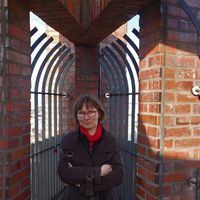- Curator, Print Room
The Scientific Library of PAU & PAN, Cracow, Polandedit
The role of Raphael’s and Michelangelo’s inventions in the shaping of the canon of figural compositions in the modern era is well known; further disseminated by the generation of their disciples and epigones by means of blueprints,... more
The role of Raphael’s and Michelangelo’s inventions in the shaping of the canon of figural compositions in the modern era is well known; further disseminated by the generation of their disciples and epigones by means of blueprints, stencils and more or less approximate copies in various techniques. On the other hand, the ways that 16th-century ornaments were disseminated still remain only broadly outlined, and the role of graphics in the process has not been precisely determined. A particular example is the popularisation of moresque motifs around the half of the 16th century. Graphic models are among the main sources of the proliferation of this fashion, which was much more popular than it is believed. It can be demonstrated that the moresque – as the first ornament in a line of many – was disseminated through graphical works. Over the three decades from ca. 1530, about twelve publications were issued, of which some were re-issued, and most were soon copied. The number of available pattern books (consisting of multiple drawings with a wide range of motifs) found its reflection in a great number of artworks decorated with the moresque. Goldsmithing was one of the domains in which the ornament found its place. In the decoration of pieces dated to mid-16th century and later, for example in double beakers or lidded cups, the moresque constitutes an almost obligatory element of the decoration, perfectly combined with other elements such as the grotesque or the scrollwork. To conclude, I believe that the intensified publishing of pattern books was the main source of dissemination for the moresque. It was the first precedent of such significant impact of the new medium – the ornamental prints.
Research Interests:
Research Interests:
Research Interests: Polish History, Printing History, Medieval illuminated manuscripts, History of the Polish-Lithuanian Commonwealth, Teutonic Knights, and 13 moreReconstruction, Mediaeval Manuscript Studies, Cracow, Jagiellonians, Władysław Jagiełło, 15th Century, Jagiellonian University, Ossolineum, The Battle of Grunwald/Tannenberg, Königsberg, Medieval Vexilology, Jan Długosz, and Wawel
Research Interests:
Research Interests:
Research Interests:
Research Interests:
Research Interests:
[Summary: Historical Relics from the Wawel Collections in the Album Zamoyskie. A Contribution to the 19th-century Iconography of Historical Monuments in Poland]
